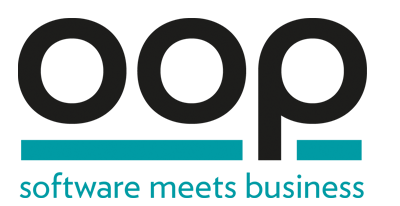
Konferenzprogramm
Unsere Empfehlung: Die Virtual Deep Dives
Mehr als 30 Jahre OOP-Erfahrung trifft auf moderne Innovation: Taucht mit uns tief in die wichtigsten Themen gegenwärtiger Software-Architektur ein – auf den "Virtual Deep Dives | powered by OOP".
Diese Konferenz versteht sich als Online-Ergänzung zur OOP München und bietet die Möglichkeit, sich intensiv und interaktiv mit den neuesten Trends und Best Practices in der Software-Architektur auseinanderzusetzen. Unsere Expert:innen und Branchenführer werden tiefe Einblicke in ihre Arbeitsweise geben und wertvolles Wissen teilen, das Sie direkt in Ihre Projekte integrieren können.
» Zu den Virtual Deep Dives
Rückblick auf das Programm der OOP München 2024
Die im Konferenzprogramm der OOP 2024 angegebenen Uhrzeiten entsprechen der Central European Time (CET).
How to reduce the footprint of Spring Boot applications
In this session we will walk through various techniques to significantly reduce the resource consumption of regular Spring Boot applications, including using Spring AOT for regular Spring apps, compiling Spring Boot apps to native images (using GraalVM), and using CRaC for instant startup (for scale-to-zero scenarios). We will compare the different approaches, discuss pros and cons for each technology, and share concrete numbers from real-world applications to give the audience an idea of what can be achieved using these technologies.
Target Audience: Developers, Architects
Prerequisites: Basic Spring Boot knowledge required
Level: Advanced
Mehr Inhalte dieses Speakers? Schaut doch mal bei sigs.de vorbei: https://www.sigs.de/autor/martin.lippert
Martin Lippert is part of the Spring engineering team at VMware and leads the Spring tools engineering. In addition to that he focuses on sustainability and green software for several years now.
Mehr Inhalte dieses Speakers? Schaut doch mal bei sigs.de vorbei: https://www.sigs.de/experten/martin-lippert/
The tragedy of user-centred design
User-centred design is one of the default modes of teams working with software, but the consequences are often unsustainable in a densely networked world as we privilege users over all other stakeholders and systems. How might teams approach building products, services and organisations from a more sustainable standpoint than 'user-centricity'? This talk looks at how the techniques of game design, community development, platform operations and security practices can support a practice focused on hyperobjects for multi-centric design.
Target Audience: Leaders, Builders, Architects, Designers, Community Members
Prerequisites: No previous knowledge, only enthusiasm for systems, building things and design
Level: Advanced
Extended Abstract:
The key feature of a 'tragedy' is when everybody does the right thing but it goes wrong anyway. The aim of this session will be to look at why user-centred design goes wrong even if everyone's intentions are pure. This talk (gently!) brings in ideas from feminism, design thinkers, political science and anthropology to focus on very practical, grounded approaches to sustainable design in software teams. We'll look at how building things and designing organisations that have increased levels of friction can improve users' experience and how 'seamless' design can lead to disempowerment. And we'll also draw on the speaker's practical experience of building products used by millions of citizens as part of the UK's digital transformation. By the end of the session we'll have a sense of what might replace the shallow seamlessness of 'user-centred' design — a multi-centric, transcendental design aimed at manufacturing enthusiastic consent.
Simon Edward Bostock is a product and design leader who's worked with software for 20+ years. His interests include how firms and brands incorporate new technologies, how work flows through organisations, EverythingOps and service topologies.



